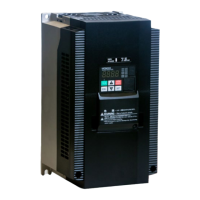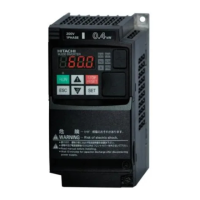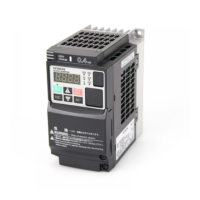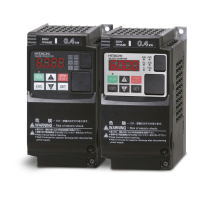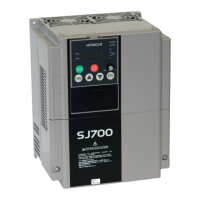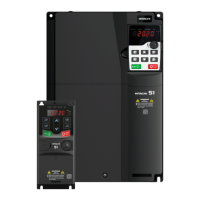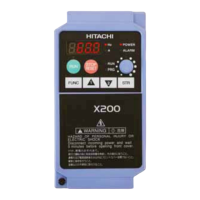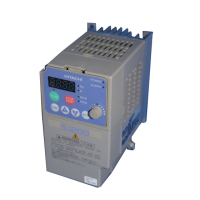Chapter 9 Inverter Functions
9-9-14
9.9.7 Restarting after Overvoltage/Overcurrent
Overvoltage or overcurrent rarely occurs, so how to restart the system when there is no problem
in the system?
How to continue to run the system when overvoltage or overcurrent occurs?
When overvoltage or overcurrent occurs, the inverter can be set to trip or restart without
tripping using "Restart mode selection after overvoltage/overcurrent error [b008]".
When restart is selected, the restart operation is repeated the number of times specified in
"Number of retries after overvoltage/overcurrent [b010]", and then the inverter trips after the
specified reties are finished.
When frequency correspondence restart is performed ([b008] = 02, 03), the restart mode is
active frequency matching restart at the frequency of the previous output interruption. For
details, refer to "9.7.3 Starting with Frequency Matching".
To perform an active frequency matching restart ([b008] = 04), refer to "9.7.4 Starting with
Active Frequency Matching" for details.
When overcurrent continues to occur, this may be caused by acceleration time specified too
short, excessive loads, or the motor being locked.
When overvoltage continues to occur, this may be caused by deceleration time specified too
short, excessive loads, or the motor rotated by an external force.
Even when the restart operation is selected, if the trip factor has not been solved after the "Retry
wait time after overvoltage/overcurrent error [b011]", the inverter will detect the trip again. In
this case, increase the retry wait time.
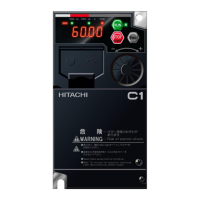
